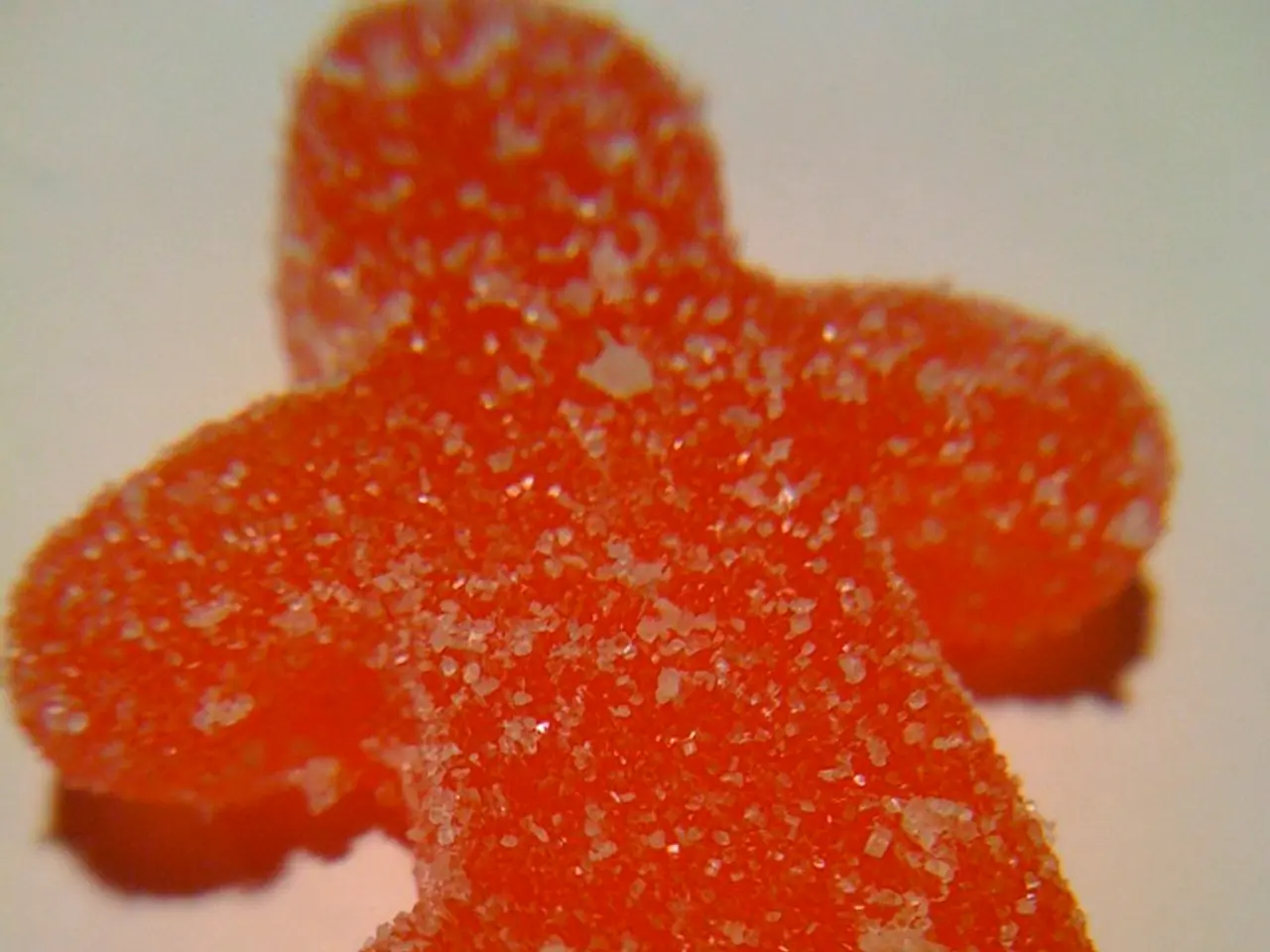Is it permissible for individuals with diabetes to consume sweet treats, chocolate, or sugar-laden foods?
In the realm of managing diabetes, maintaining a balanced diet is crucial, and this includes satisfying one's sweet tooth. Sweets and sugary foods can be incorporated into a healthful meal plan, but it's essential to be mindful of portion sizes and carbohydrate content. Here are some guidelines to help you make informed choices.
1. **Portion Control and Carbohydrate Counting**: Individuals with diabetes should manage their carbohydrate intake to maintain stable blood sugar levels. Even sugar-free items can contain carbohydrates that affect blood glucose levels.
2. **Choose Low-Calorie or Low-Carb Desserts**: Opt for desserts that are low in added sugars and calories. Examples include popsicles with no added sugar, 100% fruit popsicles, sugar-free gelatin, and puddings or ice creams sweetened with low-calorie sweeteners like stevia or erythritol.
3. **Use Sugar Substitutes Wisely**: Sugar substitutes like stevia and erythritol have little impact on blood glucose levels, making them suitable alternatives for sweetening foods.
4. **Balance Meals**: The "Diabetes Plate Method" suggests balancing meals by filling half of the plate with nonstarchy vegetables, a quarter with protein, and a quarter with complex carbohydrates. This approach helps maintain healthy blood sugar levels.
5. **Limit Added Sugars**: General dietary guidelines recommend limiting added sugars to no more than 10% of daily calorie intake. This guideline is supported by the American Diabetes Association as a reasonable goal for public health.
When it comes to reading Nutrition Facts labels, it's important to remember that the figure for total carbohydrates includes sugar, complex carbohydrate, and fiber. Manufacturers add Stevia to many different food and drink products as a sugar substitute, and products containing Stevia may describe themselves as being "naturally sweetened."
For people with diabetes, it's critical to consider the total amount of carbohydrate and not just sugar when reading a Nutrition Facts label. Stevia, a "generally recognized as safe" (GRAS) sweetener, contains no sugar or calories, making it a popular choice for those watching their carbohydrate intake.
Monk fruit, a plant native to Southeast Asia, is another natural sweetener option. Its juice is extremely sweet, around 150-250 times sweeter than table sugar. Like Stevia, monk fruit extract is also a GRAS sweetener and is available as a tabletop sweetener and online.
By following these guidelines and making informed choices, people with diabetes can enjoy sweets in moderation while maintaining a balanced and healthy diet.
- Those with diabetes, when scrutinizing a meal plan, must take heed of portion sizes and carbohydrate content to keep blood sugar levels steady.
- Sugar-free items can still contain hidden carbohydrates that affect blood glucose levels, so awareness is vital.
- Reducing added sugars and calories in desserts can be beneficial for those managing diabetes, as low-calorie or low-carb options are more suitable.
- Popsicles without added sugar, 100% fruit popsicles, sugar-free gelatin, and low-calorie sweetener-sweetened puddings or ice creams are examples of better dessert choices.
- Wise utilization of sugar substitutes like stevia and erythritol, which have minimal impact on blood glucose levels, is encouraged as a sweetening option.
- Balancing meals through the "Diabetes Plate Method," which involves filling half the plate with nonstarchy vegetables, a quarter with protein, and a quarter with complex carbohydrates, is recommended to maintain healthy blood sugar levels.
- Adhering to general dietary guidelines that limit added sugars to 10% of daily calorie intake is a reasonable objective for managing chronic diseases such as diabetes.
- When reading Nutrition Facts labels, it is essential to comprehend that the figure for total carbohydrates includes sugar, complex carbohydrate, and fiber.
- Stevia, a GRAS sweetener, contains no sugar or calories, making it a popular alternative for people carefully monitoring their carbohydrate intake.
- Monk fruit, native to Southeast Asia, is another natural sweetener option, with its juice being more than 100 times sweeter than table sugar.
- Like Stevia, monk fruit extract is also a GRAS sweetener, available as a tabletop sweetener and online.
- By implementing these suggestions and making thoughtful choices, people with diabetes can indulge in sweets judiciously while maintaining a balanced and nutritious diet, which includes managing other health-related conditions such as psoriasis, eczema, ulcerative colitis, bipolar disorder, and chronic diseases like hypertension or kidney problems.




